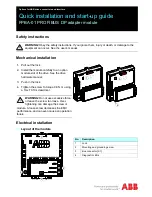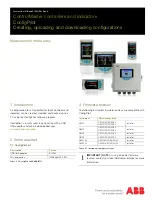
Curtis 1243
GEN
2 Manual
32
3 — PROGRAMMABLE PARAMETERS:
Throttle Parameters
Throttle Parameters
THROTTLE TYPE
The 1243
GEN
2 controller accepts a variety of throttle inputs. Instructions are
provided in Section 2 for wiring the most commonly used throttles: 5k
Ω
–
0 and
0
–
5k
Ω
2-wire potentiometers, 3-wire potentiometers, 0
–
5V throttles, current
sources, and the Curtis ET-XXX electronic throttle.
The
throttle type
parameter can be programmed to 1, 2, 3, or 4. The
standard throttle input signal type options are listed in Table 4.
Table 4
PROGRAMMABLE THROTTLE TYPES
THROTTLE
TYPE
DESCRIPTION
1
2-wire 5k
Ω
–0 potentiometer
2
single-ended
3-wire potentiometer with 1k
Ω
to 10k
Ω
range;
0–5V voltage source;
current source driving external resistor;
or Curtis ET-XXX electronic throttle
3
2-wire 0–5k
Ω
potentiometer
4
wigwag
3-wire potentiometer with 1k
Ω
to 10k
Ω
range;
0–5V voltage source;
or current source driving external resistor
THROTTLE DB
The
throttle deadband
parameter de
fi
nes the throttle pot wiper voltage range
that the controller interprets as neutral. Increasing the throttle deadband setting
increases the neutral range. This parameter is especially useful with throttle
assemblies that do not reliably return to a well-de
fi
ned neutral point, because it
allows the deadband to be de
fi
ned wide enough to ensure that the controller goes
into neutral when the throttle mechanism is released.
Examples of deadband settings (0%, 10%, 40%) are shown in Figure 15
for the four throttle types (see Table 4). In all the examples in Figure 15, the
throttle max parameter is set at 100%.
The throttle deadband parameter is adjustable from 0% to 40% of the
nominal throttle wiper range; the default setting is 10%. The nominal throttle
wiper voltage range depends on the throttle type selected. See Table 1 (page 9)
for the characteristics of your selected throttle type.
The throttle deadband is tuned as part of the vehicle performance adjust-
ment process (Section 5).
















































